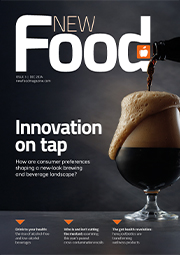Towards developing a corporate food safety culture
- Like
- Digg
- Del
- Tumblr
- VKontakte
- Buffer
- Love This
- Odnoklassniki
- Meneame
- Blogger
- Amazon
- Yahoo Mail
- Gmail
- AOL
- Newsvine
- HackerNews
- Evernote
- MySpace
- Mail.ru
- Viadeo
- Line
- Comments
- Yummly
- SMS
- Viber
- Telegram
- Subscribe
- Skype
- Facebook Messenger
- Kakao
- LiveJournal
- Yammer
- Edgar
- Fintel
- Mix
- Instapaper
- Copy Link
Posted: 1 October 2013 | NSF International | No comments yet
New techniques and models are required, such as that provided by NSF International’s Maturity Model.
A combination of ever more complex supply networks, increasing and widening regulatory burdens and more demanding consumer expectations, now confront retailers, manufacturers, catering and restaurant operators. The food poisoning dangers presented by low dose pathogens such as E. Coli are exacerbated, on the one hand, by a workforce which by and large is low paid and often transient, and on the other hand by feverish media scrutiny and the immediacy of communication created by social media. Equally, the competitive landscape and shareholder expectations put a high premium on lower costs.
Brand protection is vital, but the problem is that the accepted best practice methods of achieving food safety – policies, standards, inspections, paper trails and training – are not reducing risks and doing more of them has little incremental effect on safety…
This whitepaper is restricted - login or subscribe free to access


Why subscribe? Join our growing community of thousands of industry professionals and gain access to:
- bi-monthly issues in print and/or digital format
- case studies, whitepapers, webinars and industry-leading content
- breaking news and features
- our extensive online archive of thousands of articles and years of past issues
- ...And it's all free!
Click here to Subscribe today Login here
Related content from this organisation
- How the changes to China’s customs rules will impact exporters
- Study reveals the five biggest challenges faced by fast food restaurants
- Everything you should know about food-grade lubricants
- Panel discussion: Can food labels and product claims help consumers make informed food choices?
- Seven misconceptions about food-grade lubricants









